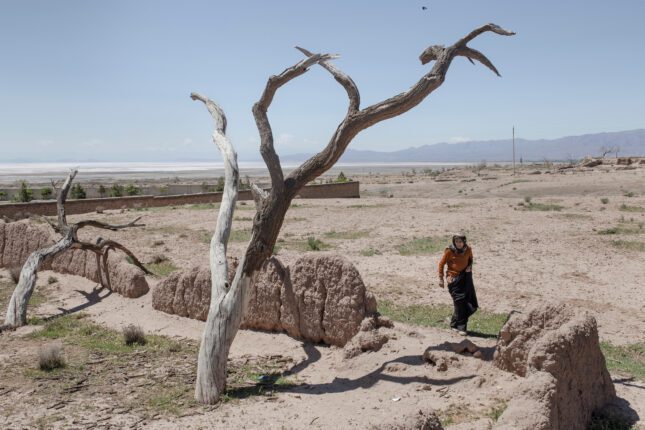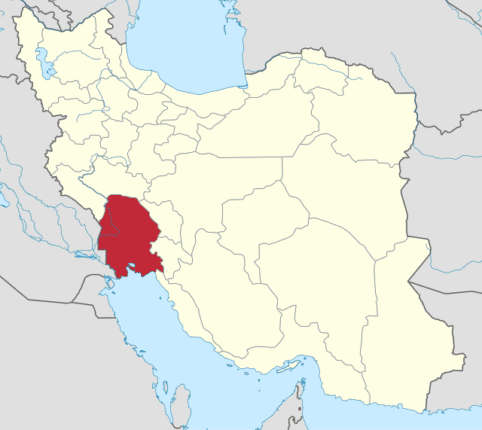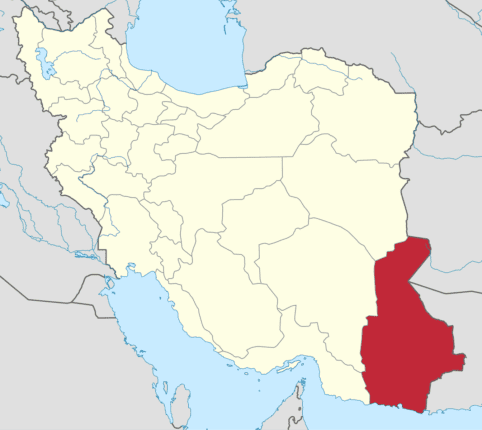-
Water, Corruption, and Security in Iran
January 23, 2024 By Eleanor Greenbaum
This past summer was the hottest on record, bringing devastating impacts to many global communities. Iran was one of many nations that faced both debilitating heat and the subsequent water stress.
While Iran’s problems received significant media attention this year, water scarcity in the country is not a new problem. For decades, corruption and poor planning have plagued Iranian water policy, with impacts falling upon its increasingly disadvantaged provinces and, ultimately, on its ethnic minorities. Poor water policy also has contributed to an increasing number of cross-border disputes.
These issues that have plagued Iranian water policy throughout its history will continue to pose challenges to its population and exacerbate its national security concerns as domestic and international tensions deepen and the climate crisis progresses.
Iran’s Water Crisis in Context
Even prior to the 1979 Islamic Revolution which shaped modern Iranian politics, the nation’s water policy has been largely unsustainable. In the 1930’s, Iran’s Shah (king) pushed for water-intensive cash crops. Dramatic land reforms in the 1960s and 70s encouraged by the John F. Kennedy administration during the “White Revolution” further developed industry while largely ignoring hydrological concerns.
Both the 1979 revolution and the Iran-Iraq War of the 1980s devastated Iran’s economy and impacted water management and infrastructure. The war and sanctions imposed by the United States and other members of the international community after the revolution hastened Iran’s need for self-sufficiency in agricultural yields. This national rush to expand the agricultural sector ultimately resulted in inefficient methods that impact the sustainability of its food and water supplies to this day.
Much of Iran’s south is an arid, sprawling desert, which makes it vulnerable to extreme heat. NOAA reported that the period of June to August in 2023 was the country’s hottest summer on record. Extreme heats forced the country to shut down for fear of “heat exposure,” although many suspect the shutdowns were also related to difficulty generating hydroelectric power. When combined with government mismanagement of water resources, these impacts have resulted in a “water bankruptcy” that has the potential to cause mass internal migration and exacerbate internal and external tensions.
The Islamic Revolutionary Guard Corps and a “Water Mafia”
Engineers in the Islamic Revolutionary Guard Corps (IRGC) became involved in infrastructure development and water resource management during the Iran-Iraq War. Following the conflict, Iran’s supreme leader Ali Khamenei created Khatam al-Anbiya—the construction arm of the IRGC. Sepsad, Khatam-al Anbiya’s dam-building arm, was created in 1992. The aim was to create jobs for IRGC engineers, and supply resources for a drive for reconstruction under the administration of Iranian president Akbar Hashemi Rafsanjani.
Sepsad and its partner Mahab Ghodss, a contractor which oversaw the construction of dams in a variety of water-vulnerable provinces, are sometimes referred to jointly as the “water mafia.” Both organizations have pushed for construction projects that spread wealth only among the elite involved in running them. The methods deployed to do so include inflating the cost of dams while providing shoddy work in the absence of monitoring and evaluation support.
The IRGC and this “water mafia” have been known to lobby for new dams while most of the existing ones are not functioning at full capacity to provide the illusion of productivity. This policy affects Iranian irrigation and hydroelectric power supplies. The absence of reliable information is pronounced. For instance, on Iran’s Water Ministry’s website, most of the data on dam project effectiveness and existence is missing.
Water Scarcity-Induced Protests and Societal Tensions in Ethnic-Minority Provinces
The Iranian government also has been responsible for diverting water supplies from certain provinces to others based on political needs. Most of this diversion has moved water away from Western provinces and towards large farming projects and urban centers. This tactic has placed these provinces in critical water shortage conditions. And while provincial politicians may lobby to divert water resources, ultimately it is the central government and its implementation mechanisms, particularly the role played by the IRGC, which is responsible for these diversions.
The problem of water scarcity—and resulting political tensions—has been significant enough to contribute to protests two provinces: Khuzestan and Sistan and Baluchestan.

Wikimedia Commons CC BY-SA 3.0, Iran Khuzestan-SVG
Khuzestan
In the west of the country, bordering Iraq, Khuzestan has been the site for many water-induced protests over the years. Despite having Iran’s second highest GDP, nearly 25% of the province lives in absolute poverty. Khuzestan boasts abundant surface water resources, access to the Persian Gulf, and high rates of rainfall; yet, 11 cities and 700 villages in the province do not have potable water.
Water woes in Khuzestan are widespread, and ultimately result in increased dust storms, limited use of public water utilities, and impacts on crop yields. Mismanagement is cited as the major factor exacerbating the province’s water supplies.
Several key dams in the province and once-rich wetlands are key in Iran’s water resources, as well as Khuzestan’s specifically. Conflict of interest between government agencies (particularly the Ministries of Energy, Agriculture, Petroleum, and the Environmental Protection Agency) in the province plays “an active role in drying up the wetlands.” 70% of the wetlands have been destroyed by contractors of oil companies. While the Khuzestan Water Authority is meant to have control over water-related construction and resources within the province, its officials have no oversight over Khatam al-Anbiya, which carried out the construction.
Protests have occurred throughout the history of water exploitation in the province, but recent turmoil in 2021 was especially notable. The “uprising of the thirsty” in this period was led by Ahwaz Arabs, a minority ethnic group native to the province, who accused the government of manufacturing a drought to displace Arab farmers.
Iranian scholars cite “uneven development” between the core and periphery of the country. This is significant when considering that, historically, ethnic minorities live on the outskirts of the nation. Long-held grievances are exacerbated by access to water resources, among other problems, and have even contributed to attempted separatist movements in the province. While tensions rose again during the 2022 Women, Life, Freedom protests, the province has been relatively quiet since the 2021 protests.

Wikimedia Commons CC BY-SA 3.0, IranSistanBaluchistan-SVG
Sistan and Baluchestan
The Eastern province of Sistan and Baluchestan, which shares a border with Afghanistan and Pakistan, has faced significant problems as well. In July 2023, hundreds took to the streets, demanding that Iran’s president come to the province to solve the issue.
As in Khuzestan, protests in Sistan and Baluchestan are not new. July’s protests were just one incident in a series of demonstrations regarding water resources. Ultimately, protests in the region went past complaints about water scarcity; the Baluch ethnic minority felt they faced long-term discrimination.
The region is already facing destruction of its culture and heritage. A landscape once full of ancient history is now covered in dust, and thousands are being forced to migrate to ensure access to sustainable water resources. In June, lawmakers in Sistan and Baluchestan warned that the province may be completely out of water within three months. Six months later, news from the province has been relatively silent.
Implications for Transboundary Water Sharing
In May of 2023, as tensions over water rights rose, gunfire broke out at the Iran-Afghanistan border over the Hirmand (also known as “Helmand”) river resulting in the death of one Taliban soldier and two IRGC members.
While Iran and Afghanistan signed a 1973 “Helmand Water Treaty,” which lays out water sharing of this key river basin, the treaty has been criticized for its sustainability and implementation challenges. These tensions over transboundary water issues have been heightened by Taliban rule in Afghanistan, which Iran does not recognize as legitimate.
Meanwhile, on Iran’s western border, the Iraqi government has accused Iran of diverting water supplies away from its borders. The Mesopotamian Marshes in Southern Iraq, which border Iran, have faced severe depletion for decades, particularly during Saddam Hussein’s regime. Iran’s “short term fixes” and rapid dam-building in the region could prove devastating for Iraqis, and also may result in deeper tensions between the two nations.
These conflicts have the potential to spread into a regional dispute, particularly as Turkey is increasingly involved in regional water issues. Ankara’s recent construction of dams along the Tigris and Aras rivers has produced anger in both Baghdad and Tehran. Some blame Turkey’s construction of dams for ongoing drought conditions in Iraq and Syria.
Ultimately, poor water infrastructure planning, poor international relationships, and climate change impacts plague not only Iran, but its neighbors as well. This may have devastating implications for the future of water diplomacy.
2023 Crisis, Climate Risks, and the Future of Water in Iran
While much of the water stress in Iran can be attributed to mismanagement and corruption, other factors certainly play a role. The growing threat of climate change is perhaps the most important. This summer, certain Iranian provinces, including Khuzestan, recorded temperatures up to 50 degrees Celsius (122 degrees Fahrenheit).
Climate change acts as a “risk multiplier,” exacerbating existing conflicts through increasingly limited natural resources, heat events, and extreme weather episodes. In an already water-stressed climate, Iran will continue to face the water scarcity risks posed by climate change. This situation will have devastating consequences for the country’s most vulnerable communities in provinces such as Khuzestan and Sistan and Baluchestan
Ongoing corruption and poor planning in water policy will continue to plague Iran as it confronts increasing water scarcity in the face of climate change. Without sensible domestic and foreign policy, the Iranian government risks more water-induced protests from marginal provinces. It also will face increased international tensions with its neighbors.
By the time the IRGC and Iran’s government realize the national and human security implications that accompany their track record of poor water management, it already may be too late.
The author wishes to thank Haleh Esfandiari, Marwa Daoudy, and Tara Sepehri Far, whose expertise on this topic was shared through enriching interviews which shaped this article.
Eleanor Greenbaum is a Staff Intern at the Environmental Change and Security Program. She is currently a senior at George Washington University in Washington, D.C. studying International Affairs with a minor in Political Science, concentrating in Conflict Resolution.
Sources: Climate Diplomacy, Imperial College London, NOAA, Al Jazeera, New York Times, Middle East Institute, Carnegie Endowment for International Peace, Brussels International Center, Rasanah International Institute for Iranian Studies, IRAM Center for Iranian Studies, International Crisis Group, Arab News, Radio Free Europe/Radio Liberty, Al-Monitor, Politico
Header Photo credit: Dead almond trees in the villages near the lake Urmia of Iran, once the sixth-largest salt lake on earth. fifteen years ago, there was water in this area.02.09.2015 taken by Shutterstock User solmaz daryani.
 A Publication of the Stimson Center.
A Publication of the Stimson Center.





